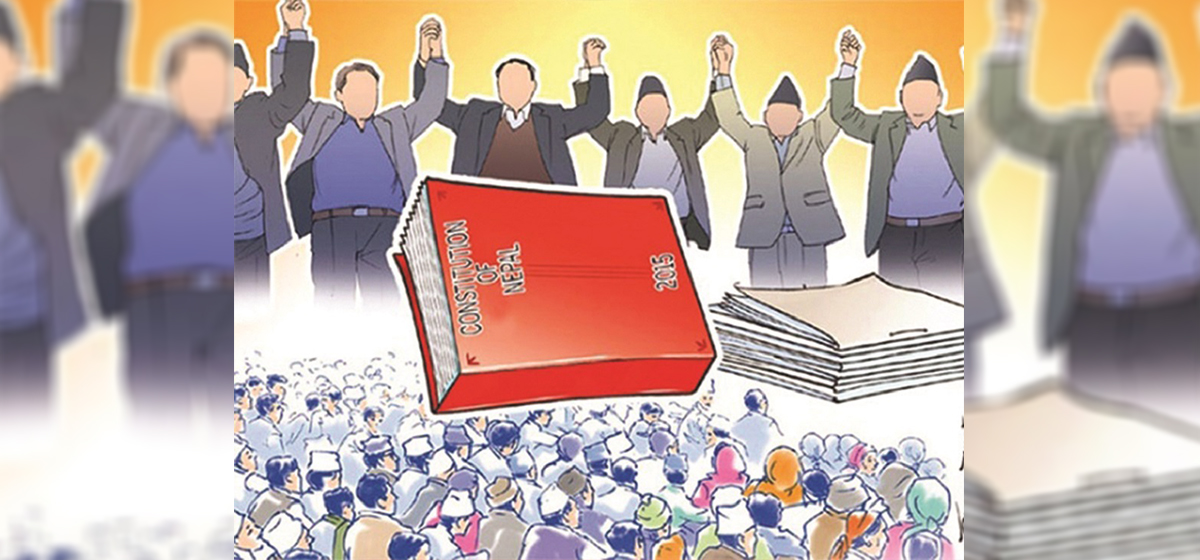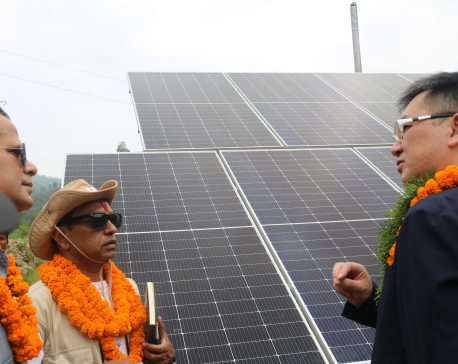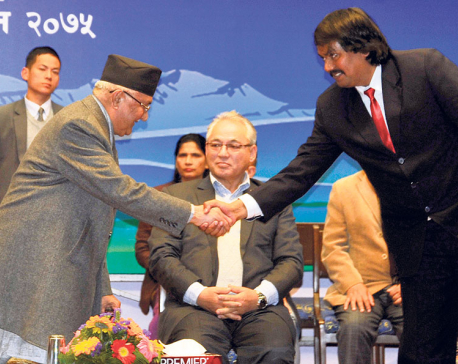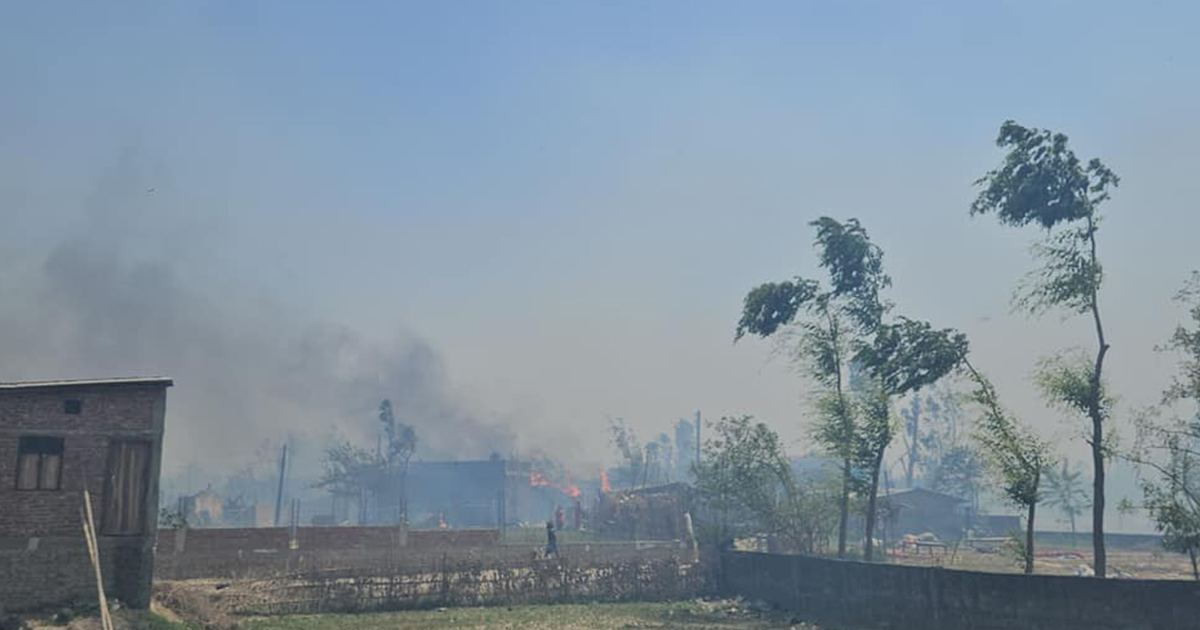
OR
Opinion
Seven Years On: Remembering Ashoj 3
Published On: September 19, 2022 04:27 PM NPT By: Randhir Chaudhary | @randhirJNK


Randhir Chaudhary
The author is a researcher associated with Peace Development and Research Centernews@myrepublica.com
Although everyone had their own interests and views on the Constitution of Nepal, the process of drafting the constitution was exclusionary. Moreover, consultations with people about the draft of the constitution were performed under a curfew and excessive use of force in the Madhesh.
It's been seven years since the Constitution of Nepal-2015 was promulgated by the Constituent Assembly (CA) of Nepal. The CA was supposed to proceed as per the constitutional norms set by the Interim Constitution. But from the very first CA, the big parties of Nepal flouted the norms established by the Interim Constitution and trampled upon the core aspirations of progressive movements led by the Maoists and Madheshi forces.
The very first CA was elected in 2008 and it expired on 28 May 2012 without promulgating the constitution as the major parties in the CA could not find consensus on core issues. Eventually, a provisional government led by the Chief Justice of the Supreme Court (SC) Khil Raj Regmi came to power to conduct the election to the second CA. The election was held on 19 November 2013. The schedule set by Regmi for declaring the constitution, viz. 22 January 2015 also failed to meet the goal.
In 2015, two devastating earthquakes spurred major political parties to forge a 16-point agreement on 8th June to promulgate the constitution. That 16-point pact was just a tactical deal between the so-called major parties to topple down federalism which was one of the prime aspirations of the Madhes revolt. The issue of federalism was stipulated in Article 138 of the Interim Constitution. The intent of the so-called major parties was clear enough that they tried to drive the constitution making process to the regressive mode. During the constitution-making process, the then Madhesh-based parties along with the apolitical marginalized people had protested hard to ensure their enshrinement of their voices in the constitution.
The state had killed dozens of protesters to quell the protests. Human rights organizations, such as the National Human Rights Commission, Human Rights Watch, Amnesty International, and the Asian Human Rights Commission, have released investigative reports detailing the state's repressive measures.
The government itself had formed a High-Level Enquiry Commission headed by Supreme Court senior Justice Girish Chandra Lal. The commission submitted its report to the government. To date, the report has to see the light of the day.
From the day the constitution was promulgated, the then Madheshi forces, which started politicking the issue of Madhesh, started observing the day as a black day. The constitution, which was brought by forcing a large part of the country to stay out of the Nepali constitution-drafting process could not provide the 'sense of ownership' to a big section of Nepali citizens. From the day the constitution was promulgated, some Madheshi parties along with the limited number of Madheshi intellectuals have marked this day as a 'Black Day'. And today the so-called Madhesh-based parties do not have the grounds to mark Ashoj 3 as a black day.
In politics, setting a bottom line and abiding by it is important. If the amendment to the constitution had been the bottom line of the so-called Madheshi forces, the energy of the leaders of those parties would have been spent 'inside parliament.' However, their attention is focused only on bagging plum posts. They never utilized the street even symbolically. The People’s Socialist Party led by Upendra Yadav and Democratic Socialist Party led by Mahanth Thakur had engaged in power exercises with Nepal Communist Party and Nepali Congress as per the opportunity they got.
Although everyone had their own interests and views on the Constitution of Nepal, the process of drafting the constitution was exclusionary. Moreover, consultations with people about the draft of the constitution were performed under a curfew and excessive use of force in the Madhesh. The forceful process inculcated apathy of a big section of people for the constitution. The constitution was supposed to unite the people but it shattered the spirit of the different ethnicities. Recently, KP Oli's unlawful dissolution of the House of Representatives unveiled the weaker sides of the constitution. In 2016, the first attempt was made to amend the constitution but failed. Similarly, in 2017, when Nepali Congress’s President Sher Bahadur Deuba became the prime minister, on 21st August registered the amendment bill in parliament. Wherein, out of 553 parliamentarians presented in the House, 347 had voted in favor of the amendment bill. This clearly showed the constitution was faulty.
Any parties preferring to be proclaimed as Madheshi political forces should not limit themselves to mark Asoj 3 as a ‘black day.’ Instead, they should lobby for the constitution to be repealed. But sadly, the behavior of Madhesi political forces seemed illegitimate to raise the issue of constitutional amendment. Upendra Yadav who topped Mahanth Thakur and made a cry for the rewriting of the constitution got heavily co-opted in power politics. Notwithstanding, it’s the duty of all parties to look into the matter of constitutional surgery for the proper health of the constitution. And last but not the least, for the gravity of human rights violations that happened during the constitution making process to its promulgation, Ashoj-3 would be remembered as a ‘black day.’
You May Like This

Over 11,000 residents in Madhesh benefit from solar-powered water projects
KATHMANDU, June 19: More than 11,000 residents in the Sarlahi and Siraha districts of Madhesh province now have access to... Read More...

What next for CK Raut?
CK Raut’s party can take up irrigation as main agenda for ending extreme poverty in Madhesh and turning agriculture into... Read More...

Parliamentary committee passes Housing Bill
KATHMANDU, Sept 12: The Development and Technology Committee of the House of Representatives today passed with revisions a report on... Read More...

Just In
- World Malaria Day: Foreign returnees more susceptible to the vector-borne disease
- MoEST seeks EC’s help in identifying teachers linked to political parties
- 70 community and national forests affected by fire in Parbat till Wednesday
- NEPSE loses 3.24 points, while daily turnover inclines to Rs 2.36 billion
- Pak Embassy awards scholarships to 180 Nepali students
- President Paudel approves mobilization of army personnel for by-elections security
- Bhajang and Ilam by-elections: 69 polling stations classified as ‘highly sensitive’
- Karnali CM Kandel secures vote of confidence


















Leave A Comment